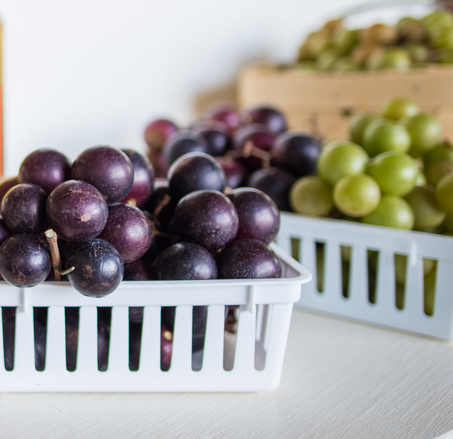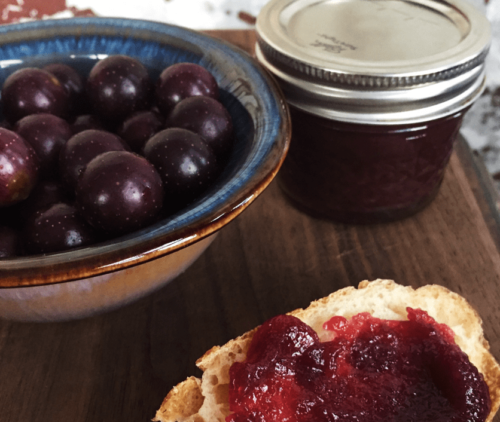Picking: Pick grapes that are fully colored and slightly yielding to the touch. Ripe grapes generally are slightly dull in appearance – underripe grapes are more shiny. Small scars or blemishes on the surface of the grape may be common.
 Buying: Look for grapes that are plump, fully colored and uniformly ripe. Underripe grapes do not get sweeter or riper in storage. Most fresh-market grapes have a “dry stem scar”, meaning that the skin doesn’t tear when they are pulled from the stem. Grapes with a “wet stem scar” can be delicious, but tend to leak a bit and won’t last as long. Avoid grapes that appear wrinkled or shriveled or have mold or other obvious damage and decay.
Buying: Look for grapes that are plump, fully colored and uniformly ripe. Underripe grapes do not get sweeter or riper in storage. Most fresh-market grapes have a “dry stem scar”, meaning that the skin doesn’t tear when they are pulled from the stem. Grapes with a “wet stem scar” can be delicious, but tend to leak a bit and won’t last as long. Avoid grapes that appear wrinkled or shriveled or have mold or other obvious damage and decay.
Storing: Refrigerate grapes in a closed container or clamshell. Grapes will store for at least a week in refrigeration. Grapes in open or ventilated containers will tend to dehydrate gradually in refrigeration. Don’t wash grapes until just before eating or using them.
 Using your grapes: A bowlful of ripe muscadines is sure to disappear – even if you have to train people how to eat them first. There are many ways to use muscadine grapes, from desserts to smoothies to savory dishes, to home-made jelly and preserves. See our recipe collection.
Using your grapes: A bowlful of ripe muscadines is sure to disappear – even if you have to train people how to eat them first. There are many ways to use muscadine grapes, from desserts to smoothies to savory dishes, to home-made jelly and preserves. See our recipe collection.
Freezing grapes: You can also freeze them for later use. You can pop the hulls off, then press them tightly together (to remove air) into a freezer container. Boil the pulp until you can strain out the seeds, and then freeze that separately. Or, pour the seedless pulp over the skins, and store in measured containers for later use in many recipes. The hulls by themselves are a great addition to a wintertime crisp or cobbler. Frozen muscadines should last for 6 months.
